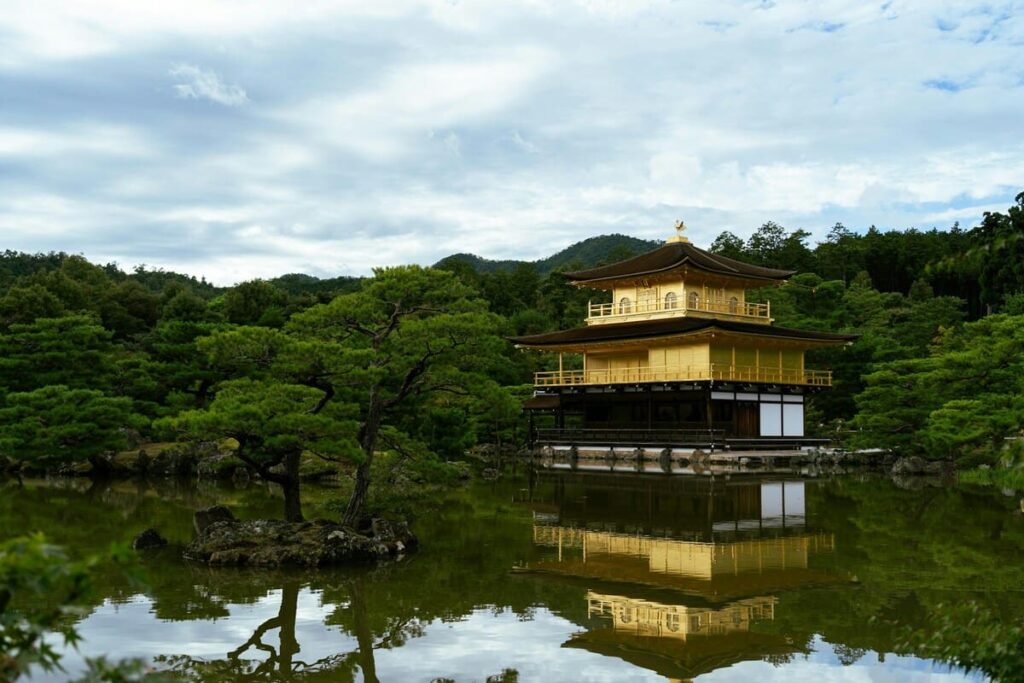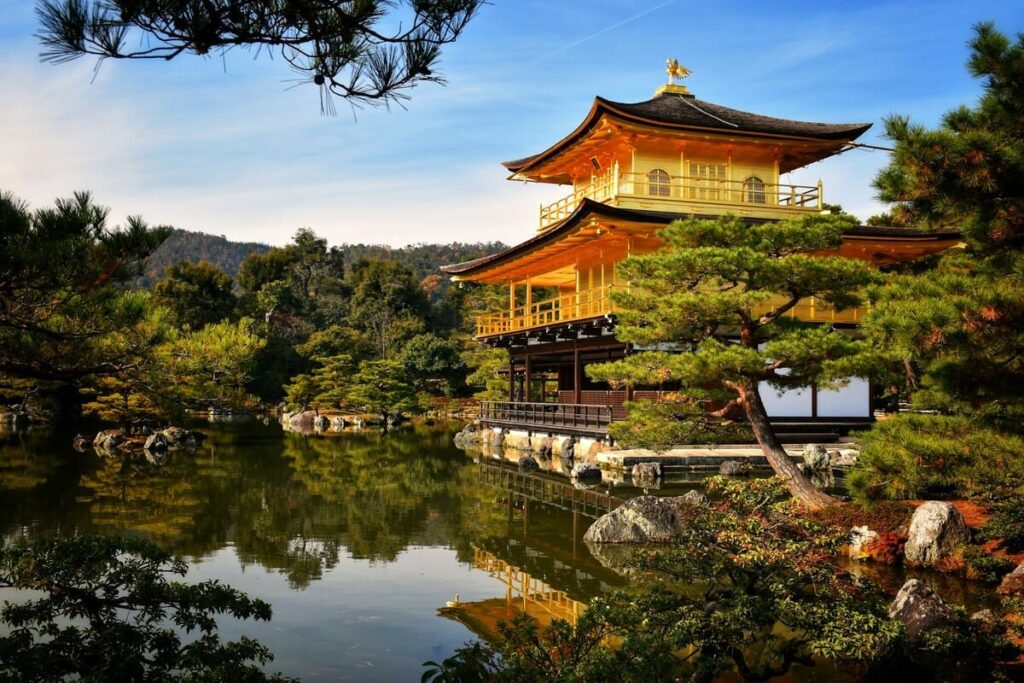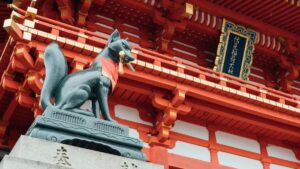Kinkaku-ji: The Golden Pavilion of Kyoto

Kinkaku-ji, also known as the Golden Pavilion, is one of Kyoto's most iconic and visited cultural sites. Situated in northern Kyoto, this Zen Buddhist temple is renowned for its top two floors, which are completely covered in gold leaf, reflecting an image of opulence and tranquility over the pond that it overlooks. The temple was originally built as a retirement villa for Shogun Ashikaga Yoshimitsu in 1397 and was converted into a Zen temple by his son after his death, as per his wishes. Today, Kinkaku-ji stands not only as a stunning example of religious architecture but also as a symbol of peace and reflection.
Architectural and Historical Significance
The structure of Kinkaku-ji harmoniously blends different architectural styles, each floor representing a distinct type of design. The first floor, constructed in the Shinden-zukuri style, used in palace buildings during the Heian Period, contrasts with the upper floors that display the gilded brilliance characteristic of samurai residences. The second floor is built in the Bukke style used in samurai homes, and the third floor is designed in the Chinese Zen Hall style, completely gilded inside and out.
The pavilion is topped with a golden phoenix, standing as a symbol of rebirth and immortality, which complements the intended impermanence and simplicity of Zen Buddhism with the pavilion's striking appearance. The surrounding pond and garden are integral to the site, designed to reflect the changing seasons and enhance the beauty of the pavilion through their natural evolution throughout the year.
Cultural Impact and Symbolism
Kinkaku-ji is an outstanding example of the way that Japanese culture can integrate spectacular artistic expression with spiritual and philosophical principles. The gold coating that gives the Golden Pavilion its name is intended to mitigate and purify any negative thoughts or feelings towards death. According to historical accounts, the shimmering reflection of the pavilion in the water surrounding it is meant to transcend the physical and philosophical existence of the place.
The Phoenix Hall
Visitors to Kinkaku-ji are often most struck by the Phoenix Hall, named after the golden phoenix statue that adorns the roof. This hall, which houses relics of the Buddha, is a place of quiet introspection and is considered a masterpiece of religious art.
Modern Relevance and Preservation
Kinkaku-ji has faced numerous challenges over the centuries, including being burnt down several times during the Onin War and most recently in 1950, when it was set on fire by a fanatic monk. The structure standing today was reconstructed in 1955, faithful to the original design but also incorporating more modern techniques to ensure its endurance. This reconstruction has allowed the temple to serve as a symbol of renewal and resilience, inspiring visitors from around the world.
Visiting Kinkaku-ji
For travelers coming to Kyoto, a visit to Kinkaku-ji offers a unique glimpse into Japan's rich cultural and artistic heritage. The temple grounds provide a serene environment for reflection and photography, especially beautiful during the fall when the changing leaves frame the golden pavilion, and during winter when the snow creates a stark contrast with the golden reflection on the pond.
Kinkaku-ji is not only a testament to the artistic and cultural achievements of Japan's past but continues to inspire and influence even in the modern age, reminding us of the enduring beauty and resilience of Japanese culture. Whether viewed as a masterpiece of architectural design, a historical artifact, or a profound spiritual symbol, the Golden Pavilion remains one of Kyoto’s most cherished treasures.


